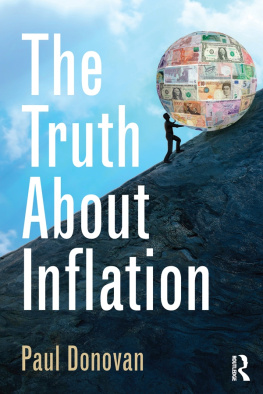
A LSO BY M ARVIN H ARRIS
Culture, People, Nature:
An Introduction to General Anthropology, Fourth Edition
The Sacred Cow and the Abominable Pig:
Riddles of Food and Culture (Originally published as Good to Eat: Riddles of Food and Culture)
Cultural Materialism:
The Struggle for a Science of Culture
Cannibals and Kings:
The Origins of Cultures
Cows, Pigs, Wars and Witches:
The Riddles of Culture
The Rise of Anthropological Theory
Patterns of Race in the Americas
The Nature of Cultural Things
Town and Country in Brazil
Copyright 1981 by Marvin Harris
All rights reserved
including the right of reproduction
in whole or in part in any form
This Touchstone Edition, 1987
Published by Simon & Schuster, Inc.
Simon & Schuster Building
Rockefeller Center
1230 Avenue of the Americas
New York, New York 10020
www.SimonandSchuster.com
Originally published as America Now: The Anthropology of a Changing Culture
TOUCHSTONE and colophon are registered trademarks of Simon & Schuster, Inc.
Designed by Eve Kirch
Manufactured in the United States of America
20 19 18 17 16 15 14 13 12 11 Pbk.
Library of Congress Cataloging-in-Publication Data
Harris, Marvin, date.
Why nothing works.
(A Touchstone book)
Rev. ed. of: America now. 1981.
Bibliography: p.
Includes index.
1. United StatesSocial conditions1980
2. United StatesEconomic conditions1981
I. Harris, Marvin, 1927 . America now.
II. Title.
HN59.2.H375 1987 973.92 86-26100
ISBN 0-671-63577-8 Pbk.
eISBN: 978-1-4391-4411-4
Contents
Preface to the Second Edition
With the republication of America Now under the title Why Nothing Works, the reader must be curious about how much America then (1980) resembles America now (1987). Although I do not pretend to be a futurologist, I would be embarrassed if my view of the trends and causes of social life in the United States had become invalid in such a short interval. (It is easy to be a success as a futurologist as long as your predictions are about whats going to happen fifty years ahead. No one can prove youre wrong until fifty years go by. If you happen to be fifty years old yourself, you can live out your life with an unsullied reputation. And in the unlikely event that you should live to be a hundred, youll still be safe. No one will remember what you said that long ago anyway.) Although there are a few points that do not accord with the march of events of the past six years, the main trends are as depicted, only more striking and pervasive. But first let me attend to the least prescient parts of the book.
The biggest discrepancy between America then and now is the deflation brought about during Ronald Reagans first term. While America Now anticipated that the Reagan administration would attack double-digit inflation by allowing the unemployment rate to increase, I naively supposed it to be impossible for any administration to survive the massive unemployment to which the nation was subjected during 1982-1983. Reagans reelection in 1984 demonstrates the extraordinary extent to which skillful politicians can inflict hardships upon minorities, the poor, and blue-collar workers without losing the support of the rest of the electorate. In fact, one ominous implication of the 1984 elections voting statistics is that the majority of the electorate voted for Reagan precisely because they approved of punishing people for being on welfare, for being unemployed, for being poor, and for being black. A slightly more charitable interpretation is that the voters were not motivated by hate and fear but were simply tired of hearing about the plight of their unfortunate countrymen and countrywomen.
I still maintain, however, that there is a limit to the amount of punishment a party can dish out and still remain in power. Despite the recovery of 1984, official unemployment already stands at 7 percent. But this does not include the large numbers of workers who have been unable to get back into the labor force as a result of the disappearance of their old jobs. The next downturn in the business cycle, therefore, is not likely to be met with stoic indifference by either party. Everything is poised for a new surge of inflation to avoid or to mitigate the impending crisis: two trillion dollars of Federal debt; 200-billion-dollar Federal budget deficits; equally unprecedented levels of corporate and consumer debt; farm debt out of control; enormous international loans in partial default; a 125-billion-dollar negative balance of trade; and the nations largest steelmakers in bankruptcy or close to it. As a further portent of things to come, the stock market is at an all-time high, which, given the sluggish debt-ridden state of the economy, presents itself as a classic bubble sustained by nothing more than speculative fever. Of course, events may in the short run prove my analysis of the inflationary tendencies in the U.S. economy to be incorrect. If so, I shall enter a plea for clemency on the grounds that nobody else, and least of all any professional economist, has been able to predict what the economy will do in the short run.
In other respects, events have shown that America Now was on target. The shift from a goods-producing to a service-and-information economy remains the central impulse of social life in late-twentieth-century America. By now everyone is aware that nonmilitary goods production in the U.S. has been permanently damaged as company after company flees our shores and record amounts of foreign goods pour across the border. And by now most people are aware that the decline in manufacturing jobs has been accompanied by a huge increase in lower paying service- and information-oriented jobs. Yet many continue to see this shift as a transition from an industrial to a post-industrial society. My objections to this phrase as voiced in America Now remain valid. The rise of the service-and-information economy was not the beginning of the end of industrial society. Contrary to the predictions of some well-known futurologists, the vast majority of Americans continue to work at routine, mechanized, minutely divided tasks that are the hallmarks of all industrial modes of production. If workers can no longer be described as mere cogs in machines, it is simply because machines, like computers and telephones, rely more on microchips than on gears. And if office workers prefer to disassociate themselves from factory employees, it is not because they are less subject to production quotas and a minutely detailed division of labor than people who work on assembly lines. For those interested in telling it as it is, hyperindustrial as suggested in America Now, remains a more apt depiction of the kind of society in which Americans now live.
I am not aware of any reason to modify my original analysis of the root causes of the rise of Americas hyperindustrial service-and-information economy. If anything, one can see even more clearly today how it all happened. The success (or was it already the failure?) of the labor movement in the U.S. tended to raise the cost of everything from shoes to television sets. Concurrently, in the absence of any semblance of a national industrial policy (except in weapons, aerospace, and nuclear energy), management was allowed to pursue short-range profits without worrying about rising foreign competition. This led to a failure to modernize plants and equipment (again except for armaments, aerospace, and nuclear energy) and to an increase in productivity that was too slow to compensate for Americas higher labor costs.
Next page

















